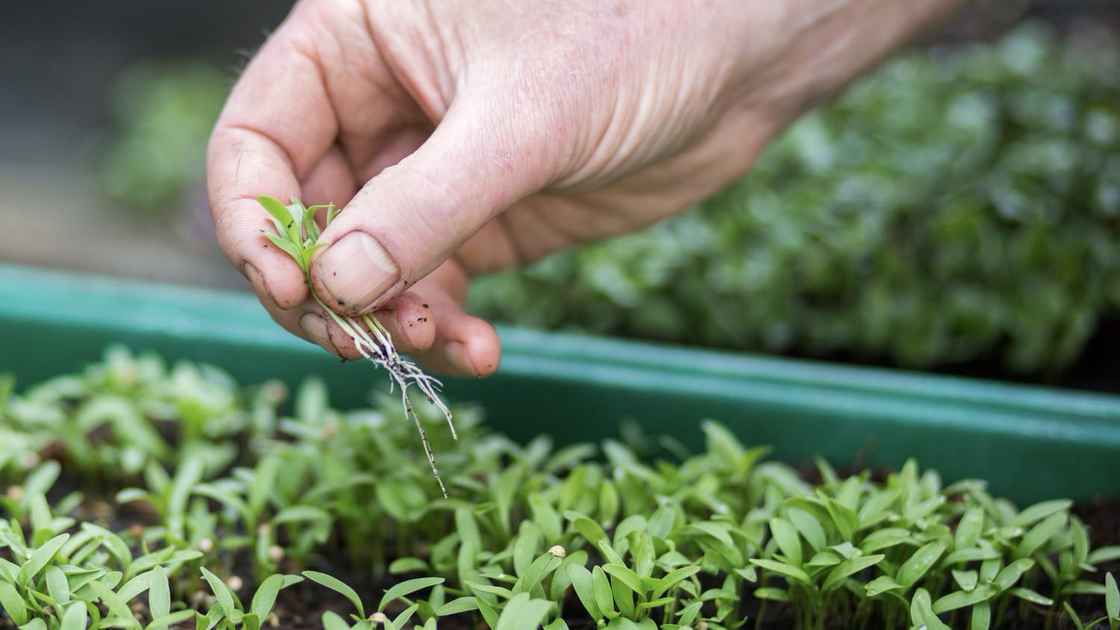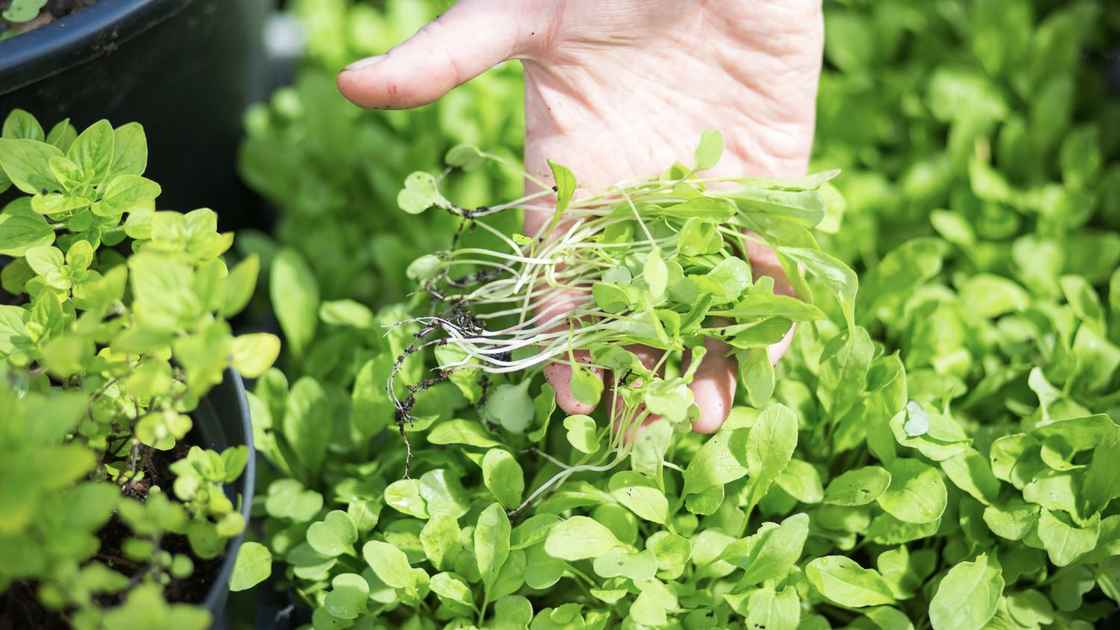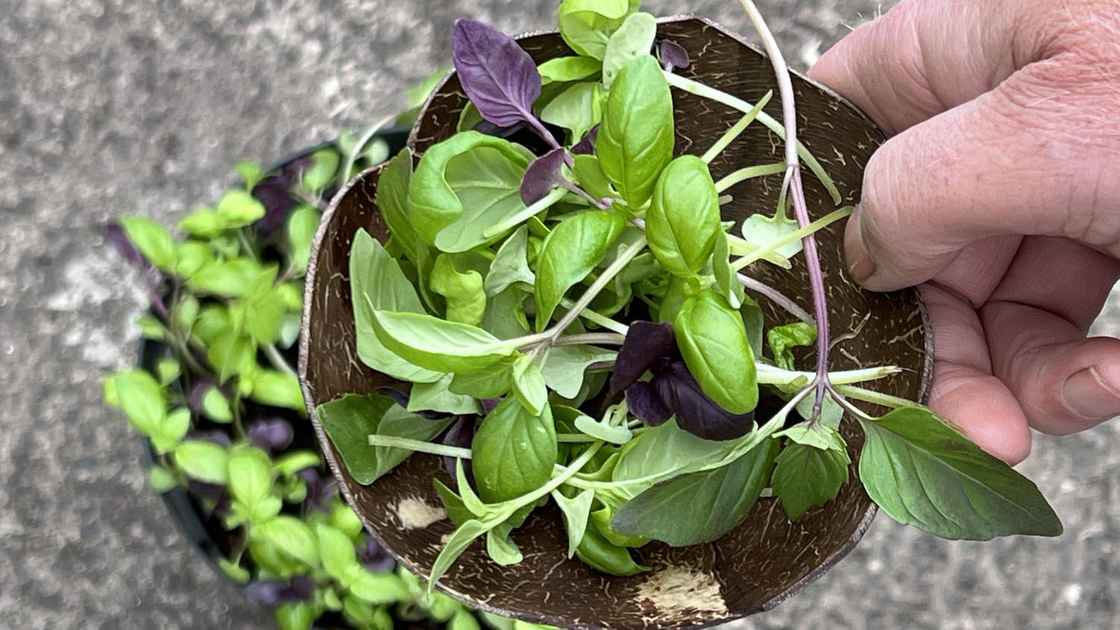Three Reasons to Sow Thickly and Thin - and get More from your Pots

Over the years, I've experimented with different spacings of plants in containers. One of my 'discoveries' (although I'm sure I'm not the first!) is that many leafy vegetables will give you better harvests if you sow them much closer together than seed packet guidelines.
The idea is to sow thickly and then, as they grow, 'thin out' - gently pull out some of the plants evenly across the container, or cut with scissors. As well as making space for the remaining plants to continue to grow, this technique also gives you a small - and early - harvest of tasty microgreens. Yum.
This technique also works with a few root crops, like spring onions, but NOT with fruiting crops like tomatoes.
I think it's a great way for growing in containers in limited space - because it gives you:-
- Multiple harvests: You get more harvests from one pot - and over a longer period. There's no need to wait for all the plants to mature. First, you can pick microgreens (often in just a week or two), then baby leaves (or roots), and finally full-sized plants.
- Insurance against slugs: If some seedlings get eaten by slugs or birds, you can simply move a few of the surviving seedlings into the empty spaces.
- More efficient seed use: Seed packets often contain more seeds than you need in a small container garden. Using more of them while they are fresh makes sense. Especially since some seeds, like spring onions/scallions and peas, have relatively short lifespans of just a year or two.
Baby basil thinnings. Most guidelines will tell you to plant basil 6 - 16 inches apart. However, if you sow them close (see photo at top), you can first pick small baby basil like this (which taste devine!) and slowly thin out the pot to give the remaining plants the space they need. I grew this from a pack of mixed basil that has far more seeds than I need. So it's a great way to make good use of the seed and grow more in a small space!
How to Sow and Thin
- Sow seed thickly. There is no hard and fast rule about exact spacings - it partly depends on how many surplus seeds you have. Generally between 1 - 3cm / 1/2 - 1 inch between seeds works well. This will provide plenty of surplus plants while also leaving enough space between each plant to make it easier to remove some without too much disturbance to the roots of the plants next door.
- Leave to germinate as usual.
- When you see that some of the leaves are starting to overlap each other (see photo at top), carefully pull out (or chop at the base with scissors), some of the plants. Do this evenly across the pot so that the remaining plants all have more space. At this stage you will normally be picking microgreen sized leaves - often delicious!
- Repeat this process each time you see the leaves of the plants overlapping each other. Your next harvest will probably be baby leaf size.
- Continue thinning out until the plants are roughly at seed packet spacings or a bit closer. You can then often extend the harvest period of these remaining plants by picking the outer leaves and leaving the inner ones to regrow. Picking the outer leaves well with things like rocket / arugula and lettuce, for example.
- When the plant starts to lose condition and vigour (this will often happen quicker in warm weather than cool) or starts to bolt (flower prematurely), it is time to pick and eat the whole plant - and sow again.

Coriander tends to bolt in early summer - so one way to get a good yield from one pot is to sow it close and thin out as it grows. I usually grow it from the seed in spice pack - it often works just as well. PS the roots of coriander are edible, too!
Which plants does this work best with?
In my experience, this method works well for most leafy crops (I often use it for coriander, rocket/arugula, lettuces, and mustards) and a few root crops, particularly spring onions/scallions. Most fruiting crops are not suitable for this method as they require more space.
I think it also works best during the prime months of the growing season when plants are growing strong and fast. When growing for winter, it's best to give plants more space so that they can grow large and strong to survive cold weather.

Rocket / arugula thinnings. Rocket / arugula can often be purchased in large bags at low cost from microgreen seed suppliers, making this a cost effective way of growing a good supply in a small space.
Keys to Success
For this method to work well, there are three important things you need to do:
- Use Good Quality Compost/Potting Mix: This is always important in container gardening but even more so when growing plants close together.
- Thin Regularly: If the plants are allowed to get too large while close together, they can become stressed and lose condition, often resulting in toughness, bitterness, or premature bolting (flowering and going to seed). If in doubt, it's better to pick earlier and more often than leave it too long.
- Liquid Feed as They Grow: Use an organic feed like liquid seaweed or homemade nettle feed, once a week once the plants are established. Feeding is always important to get the optimum yield in containers. And particularly so when using this method: the more numerous plant in the small space require more food to grow.
What's your experience with spacing?
If you try experimenting with spacing, I’d love to hear about what you discover in the comments. And if you try this method, I'd love to hear which crops you find it works well with - and, just as importantly - any that it doesn't.


3 comments
This is so helpful. I've done this with rucola and it looked like a little forest in that container lol it grew so much! I only did this out of frustration though because so far, most of the seeds I use germinate pretty quickly when I've just opened the packet and then the second time I go to sow any nothing germinates. Do you know why this happens? After using, I close each seed packet with tape and put them in a transparent plastic box in the dark. Not sure what I'm doing wrong. I guess I should just use up all the seeds all at once as soon as I open the packet.
Hi Marica, in cool, dry, dark conditions most seeds should last at least one year, and often longer. If you search online for 'seed viability charts' you'll find how long different seeds can last for. Some like spring onion and peas have relatively short lifespans (1 - 3 years), others like tomatoes can last seven years or more. One thing to watch out for: in the UK, at least, the date on seed packs is often the date the seeds were packed NOT the dates the seeds were saved. This isn't very helpful really as it means you have no way of knowing how old the seeds actually are. But good, reputable seed merchants should normally sell you reasonably fresh seeds - try to find one that professional growers use, as they rely on them for their livelihood and will not put up with poor quality seed!
I find your writings about wormeries so interesting and would loved to have enrolled on your blog if that is what it is called, but at the age of 80 it is just to expensive and unfortunately I am useless on the computer. I have learned so much from your book and your emails. My wormerie which I started 3 years ago is surviving but it would have been nice to lean more. Can you recommend anything I can read about the subject.
I thank you for all the information you regularly send me.
Meliora
Leave a comment